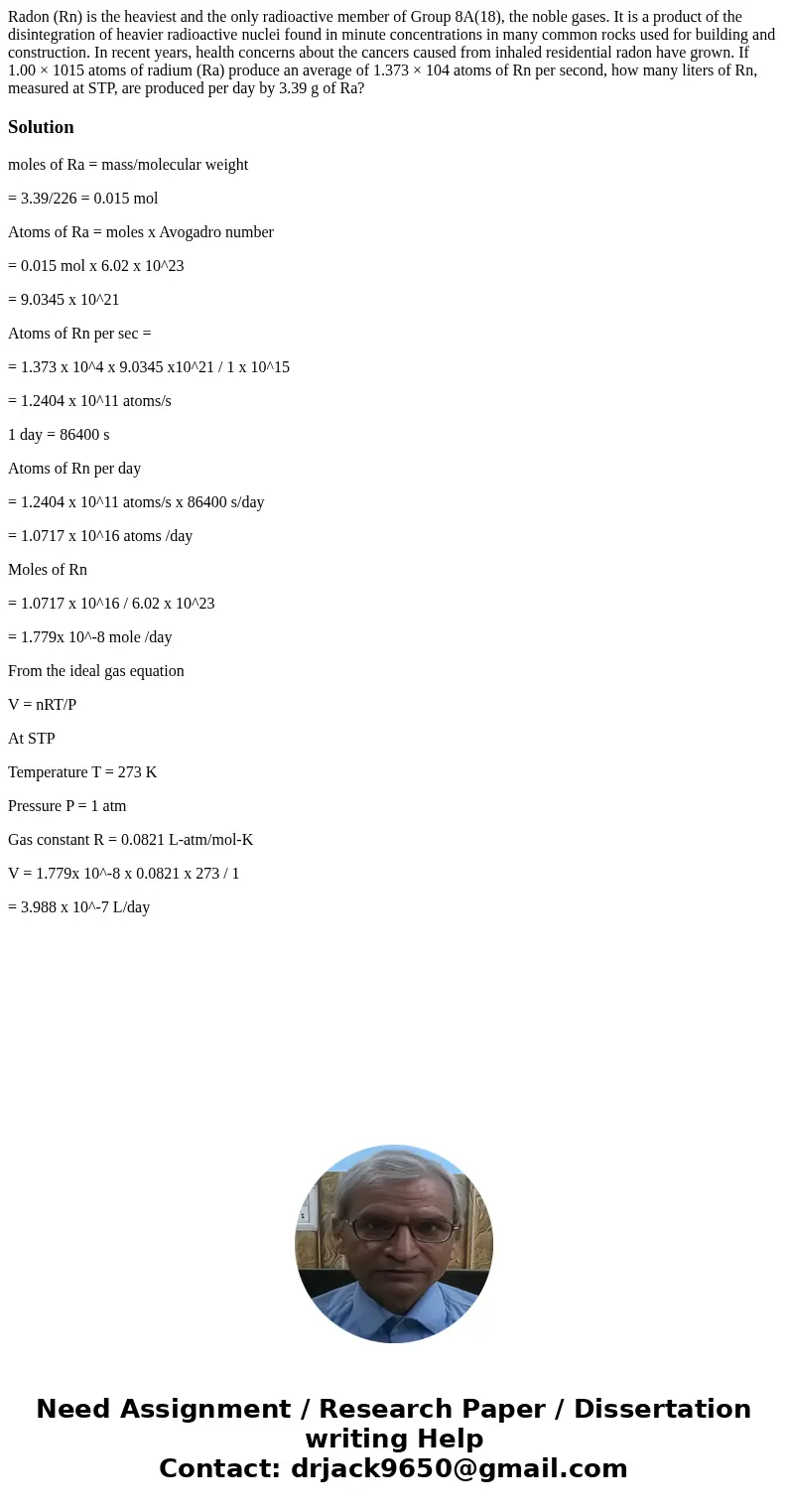Radon Rn is the heaviest and the only radioactive member of
Radon (Rn) is the heaviest and the only radioactive member of Group 8A(18), the noble gases. It is a product of the disintegration of heavier radioactive nuclei found in minute concentrations in many common rocks used for building and construction. In recent years, health concerns about the cancers caused from inhaled residential radon have grown. If 1.00 × 1015 atoms of radium (Ra) produce an average of 1.373 × 104 atoms of Rn per second, how many liters of Rn, measured at STP, are produced per day by 3.39 g of Ra?
Solution
moles of Ra = mass/molecular weight
= 3.39/226 = 0.015 mol
Atoms of Ra = moles x Avogadro number
= 0.015 mol x 6.02 x 10^23
= 9.0345 x 10^21
Atoms of Rn per sec =
= 1.373 x 10^4 x 9.0345 x10^21 / 1 x 10^15
= 1.2404 x 10^11 atoms/s
1 day = 86400 s
Atoms of Rn per day
= 1.2404 x 10^11 atoms/s x 86400 s/day
= 1.0717 x 10^16 atoms /day
Moles of Rn
= 1.0717 x 10^16 / 6.02 x 10^23
= 1.779x 10^-8 mole /day
From the ideal gas equation
V = nRT/P
At STP
Temperature T = 273 K
Pressure P = 1 atm
Gas constant R = 0.0821 L-atm/mol-K
V = 1.779x 10^-8 x 0.0821 x 273 / 1
= 3.988 x 10^-7 L/day

 Homework Sourse
Homework Sourse